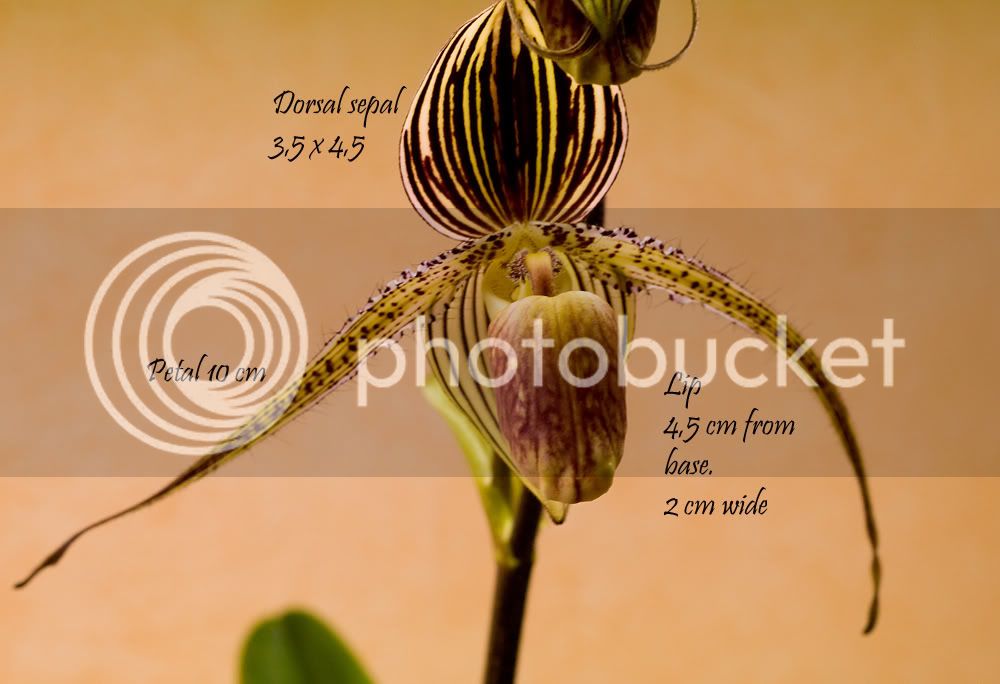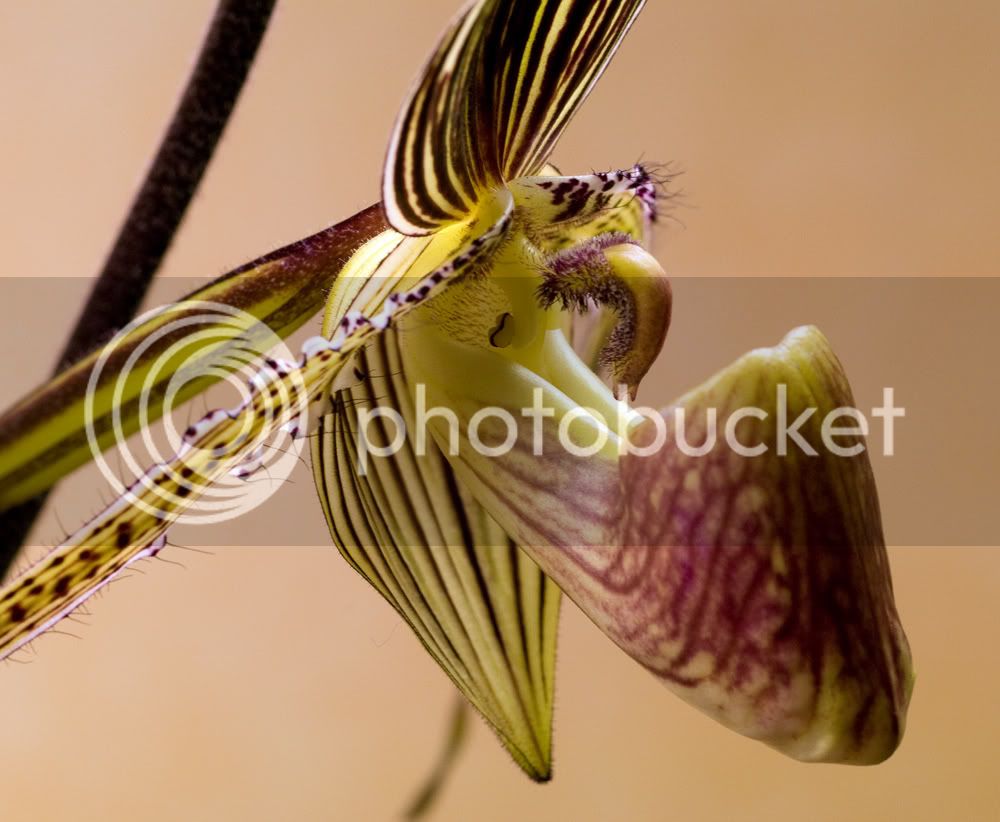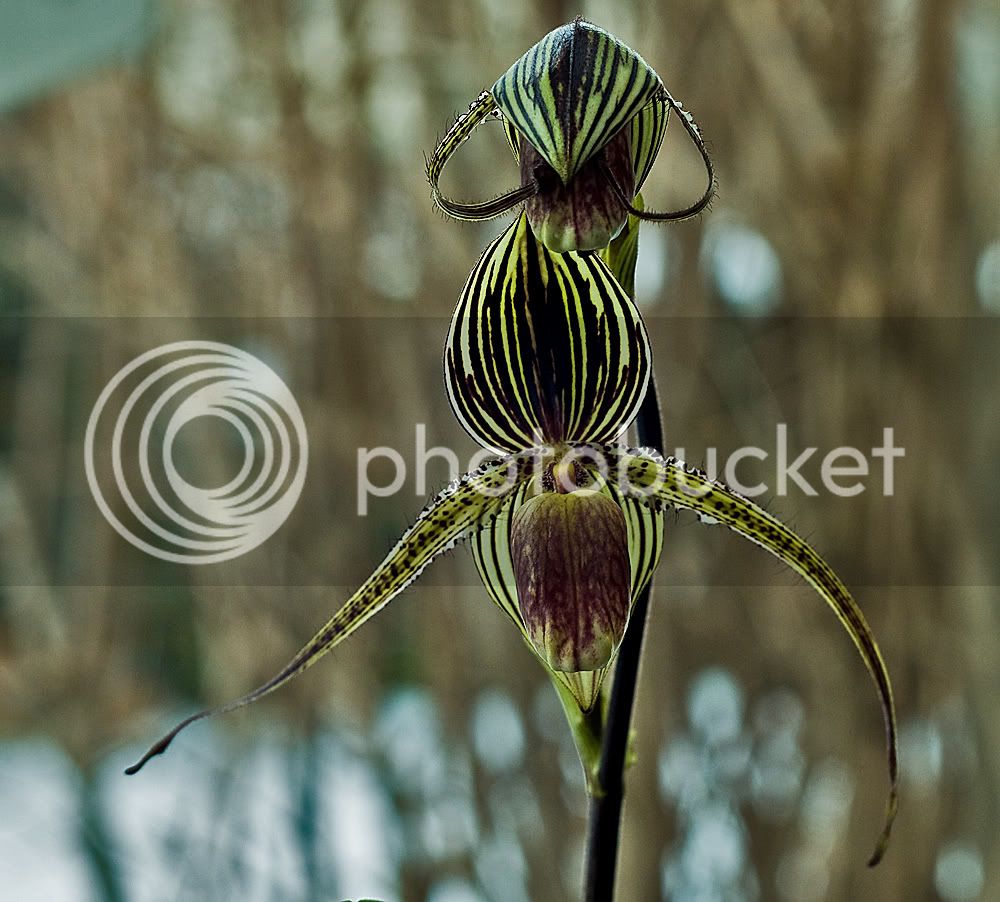Now that there are more photos to see, I agree that the staminode is a bit off. It's not the exact shape of a pure roth. Plus, the striping in the dorsal sepal looks suspiciously like it has wilhelminiae influence. Of course, wilhelminiae used to be considered a variety of glanduliferum...along with praestans. So, it could be that this plant is a hybrid of St. Swithin and wilhelminiae....or even St. Swithin and William Ambler. William Ambler is roth x wilhelminiae. If this were the case, I'd expect to see a VERY, VERY roth-like flower with just a hint of the other two species....and basically, with this flower, that's what we're seeing. It looks like a roth at first glance; but, there is the issue of the staminode being a bit off and the dorsal sepal having very wilhelminiae-looking influence. In the end, it's unlikely to ever know for sure what it is. It's always easier to say what something IS NOT, rather than what IT IS. IMHO, this IS NOT St. Swithin x praestans. There is too much roth influence and not enough praestans influence. If I had to guess (and please note, this is just an educated guess), I'd say that this is St. Swithin x William Ambler.

















































